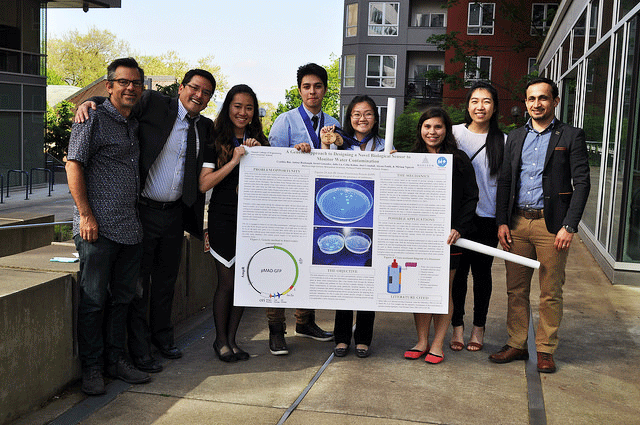Location
Portland State University
Start Date
5-3-2014 9:30 AM
End Date
5-3-2014 11:30 AM
Persistent Identifier
https://archives.pdx.edu/ds/psu/26358
Description
Modern technology continues to change and improve constantly as people find ways to make things faster, smaller, and better - but these changes often leave the elderly behind. This year’s Innovation Challenge asked groups to focus on how to create and improve technology geared towards the aging generations. For our initial research, the Grant High School team and mentors visited an elderly care center and interviewed a few of the residents, asking what types of technology currently improve their lives, and what types of technology could potentially improve their lives.
The Problem: After the interviews, we were able to identify similarities in the needs of our target market, and use those similar needs to design a product. We noticed when we visited the elderly care facility that many of the residents we talked to had issues with eyesight; some residents were unable to see when a cell phone started going off across the desk in front of them, or were unable to make out pictures on the wall. Residents told us that they prefer using an analog clock to a digital one because that is what they had used most of their lives, but they could no longer clearly make out the positions of the hands. People who cannot see the time have a harder time staying on schedule, and staying independent in general, as they cannot stick to their personal daily routine without the time. A separate issue we noted was that many of the elders we visited had trouble with mobility. They had less mobility in their limbs, and had difficulties controlling their fingers. In addressing these problems in our project, we focused primarily on the issue of sight, but made sure to accommodate those with limited mobility as well.
The Solution: After taking into account the needs we found, we came up with a idea to combine wall clocks with the technology found in many smart phones to create a smart clock. This clock will allow users with and without mobility and sight disabilities to keep track of time and tasks. This would allow the aging generations to more easily stay on track with their essential and nonessential routines and plans by making the benefits of newer technology much more accessible and easy to understand.
Fieldwork Journal
The Smart Clock
Portland State University
Modern technology continues to change and improve constantly as people find ways to make things faster, smaller, and better - but these changes often leave the elderly behind. This year’s Innovation Challenge asked groups to focus on how to create and improve technology geared towards the aging generations. For our initial research, the Grant High School team and mentors visited an elderly care center and interviewed a few of the residents, asking what types of technology currently improve their lives, and what types of technology could potentially improve their lives.
The Problem: After the interviews, we were able to identify similarities in the needs of our target market, and use those similar needs to design a product. We noticed when we visited the elderly care facility that many of the residents we talked to had issues with eyesight; some residents were unable to see when a cell phone started going off across the desk in front of them, or were unable to make out pictures on the wall. Residents told us that they prefer using an analog clock to a digital one because that is what they had used most of their lives, but they could no longer clearly make out the positions of the hands. People who cannot see the time have a harder time staying on schedule, and staying independent in general, as they cannot stick to their personal daily routine without the time. A separate issue we noted was that many of the elders we visited had trouble with mobility. They had less mobility in their limbs, and had difficulties controlling their fingers. In addressing these problems in our project, we focused primarily on the issue of sight, but made sure to accommodate those with limited mobility as well.
The Solution: After taking into account the needs we found, we came up with a idea to combine wall clocks with the technology found in many smart phones to create a smart clock. This clock will allow users with and without mobility and sight disabilities to keep track of time and tasks. This would allow the aging generations to more easily stay on track with their essential and nonessential routines and plans by making the benefits of newer technology much more accessible and easy to understand.



Comments
Mentors: Paul Cho, Charmion Donahue, Ashish Kota
The Smart Clock is licensed under the Creative Commons Attribution-NonCommercial 4.0 International License.